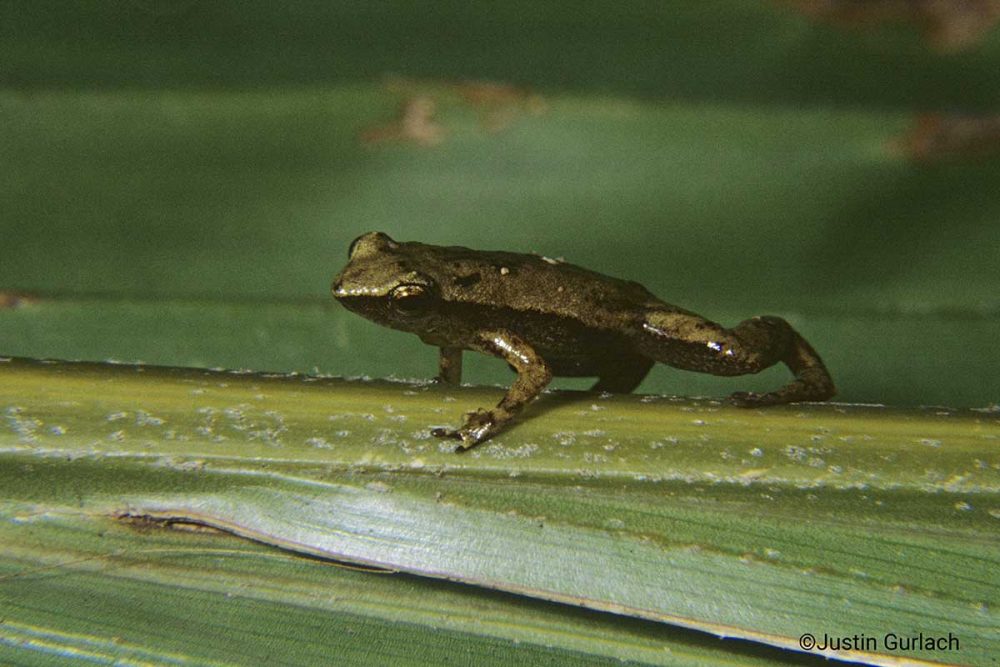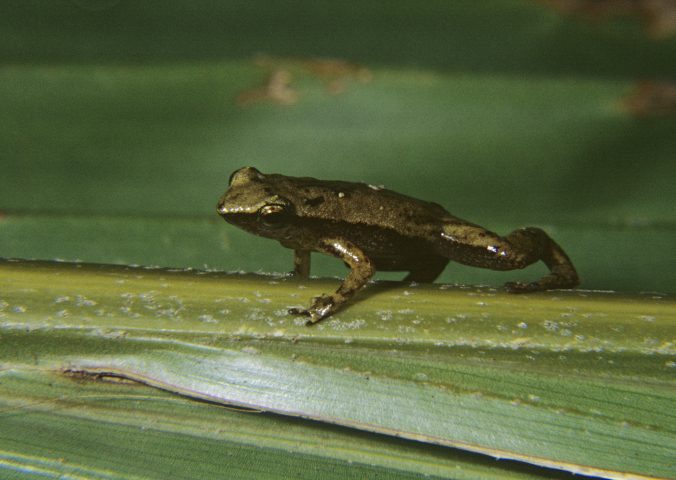About
The Critically Endangered Seychelles palm frog was only described as a new species in 2002, and details of its breeding behaviour are currently unknown.
This species is part of the Sooglossidae (Seychelles frog) family which are endemic to the Seychelles. The family diverged from their closest ancestors, the purple frogs of India, around 100 million years ago. This is around the same time humans and elephants last shared a common ancestor. It is the only species of native Seychelles frogs not to be found on the largest and most populous island of Mahé. This is a very small frog, reaching around 1.4 cm in length, although its close relative Gardiner’s Seychelles frog is smaller still.
The Seychelles palm frog is Critically Endangered, with fewer than 20,000 individuals remaining and the population declining in many parts of its very small range (7 km2). Such a small range is an inherent risk, as the frog is more vulnerable to ecological disasters and climate change. The frog is under threat from habitat degradation due to introduced plants and, most importantly, climate change. The declines in population are in areas with changing rainfall patterns, exposing the frogs to drier conditions. It is projected that all suitable habitat for the frog will be lost before the end of the century.
The forest areas in which this species occurs are managed for conservation by the Nature Protection Trust of Seychelles via their Islands Development Company Silhouette Conservation Project. Many small reserves on the islands have been set up by the Seychelles Government and independent agencies to protect specific species and general habitat areas.
- Order: Anura
- Family: Sooglossidae
- Population: <20000
- Trend: unknown
- Size: 11-14.3mm
EDGE Score
Distribution
Restricted to Silhouette Island in the Seychelles, occurring 250m above sea level and has an known distribution of only 665 hectares, which is approximately the size of 440 football fields!
Habitat and Ecology
Its habitat is high forest over 250m above sea level and it closely associated with palms. The breeding habits are unknown but it is likely to take place by direct development; meaning the offspring will bypass the tadpole stage and develop into froglets within the egg. The females will lay the eggs on the ground or in leaf axils (where the shoot or leaf grows out of the main stem).



